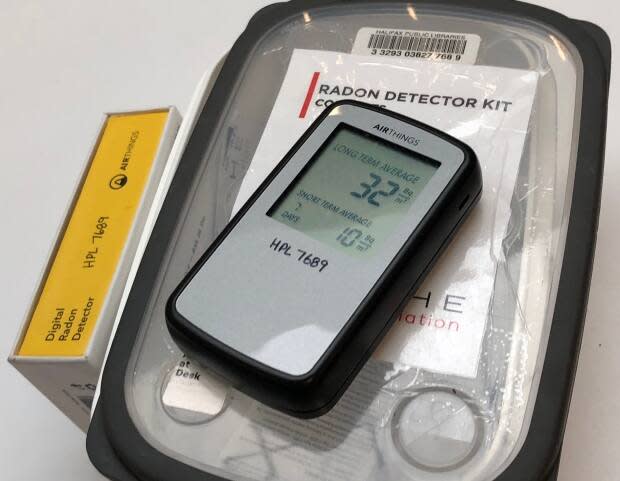Nova Scotia buying 100 more radon detectors so people can test their homes
Nova Scotia is spending $30,000 to ensure more people across the province have access to radon detectors.
Radon gas naturally occurs through the breakdown of uranium in the soil. Colourless and odourless, long-term exposure to the radioactive gas is linked to lung cancer.
"More Nova Scotians need to test their homes for radon," said Energy and Mines Minister Derek Mombourquette.
In 2017, 150 radon detectors were made available through library systems across the province, but the program became so popular there are eight-month waiting lists in some areas.
"The demand was phenomenal," said Dave MacNeil, a manager with Halifax Public Libraries. "Halifax alone has circulated them [the radon detectors] 1,160 times."

The extra funds announced on Thursday will add 100 more detectors for libraries around the province and is expected to cut wait lists in half.
Dr. Robert Strang, Nova Scotia's chief medical officer of health, called the announcement "good news." He said about 16 per cent of lung cancers come from radon exposure.
Nova Scotia radon hotspots
Robert MacDonald, the president of the Nova Scotia Lung Association, said there are rocky areas of the province that have higher concentrations of radon, such as northern Cape Breton, Tantallon, Timberlea and Hammonds Plains.
"But just because you are in that area doesn't mean the levels in your home will be elevated," he said.
On the flip side, MacDonald said that just because a home isn't in a rocky area doesn't mean the levels are acceptable.
"The only true way to know is to test your home," he said.
Test results
Officials with the Department of Energy and Mines say the best time to test for radon is during the winter.
Radon detectors measure radiation levels in units known as becquerels. If a test shows under 200 becquerels, no action needs to be taken. If the device detects between 200 and 600 becquerels, steps should be taken within two years. If the result is more than 600 becquerels, action should be taken within one year.
Remediation could be as simple as sealing cracks in the basement or adding ventilation, but it could also involve installing a sub-depressurization system, which involves piping and a fan to remove the radon out of the ground before it gets into the house.
The cost of a sub-depressurization system costs around $1,500 to $2,500.
MORE TOP STORIES

